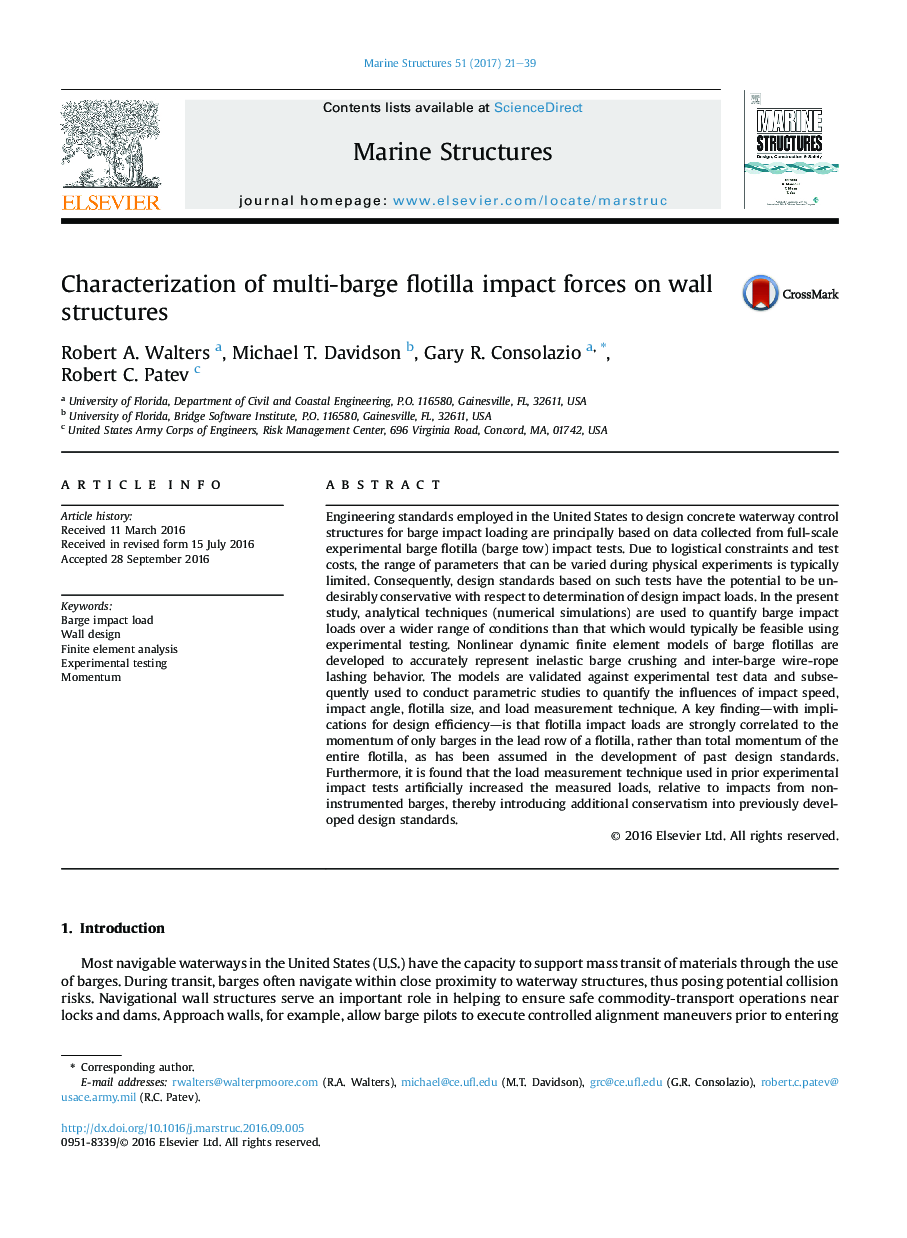| Article ID | Journal | Published Year | Pages | File Type |
|---|---|---|---|---|
| 4925080 | Marine Structures | 2017 | 19 Pages |
Abstract
Engineering standards employed in the United States to design concrete waterway control structures for barge impact loading are principally based on data collected from full-scale experimental barge flotilla (barge tow) impact tests. Due to logistical constraints and test costs, the range of parameters that can be varied during physical experiments is typically limited. Consequently, design standards based on such tests have the potential to be undesirably conservative with respect to determination of design impact loads. In the present study, analytical techniques (numerical simulations) are used to quantify barge impact loads over a wider range of conditions than that which would typically be feasible using experimental testing. Nonlinear dynamic finite element models of barge flotillas are developed to accurately represent inelastic barge crushing and inter-barge wire-rope lashing behavior. The models are validated against experimental test data and subsequently used to conduct parametric studies to quantify the influences of impact speed, impact angle, flotilla size, and load measurement technique. A key finding-with implications for design efficiency-is that flotilla impact loads are strongly correlated to the momentum of only barges in the lead row of a flotilla, rather than total momentum of the entire flotilla, as has been assumed in the development of past design standards. Furthermore, it is found that the load measurement technique used in prior experimental impact tests artificially increased the measured loads, relative to impacts from non-instrumented barges, thereby introducing additional conservatism into previously developed design standards.
Related Topics
Physical Sciences and Engineering
Engineering
Civil and Structural Engineering
Authors
Robert A. Walters, Michael T. Davidson, Gary R. Consolazio, Robert C. Patev,
